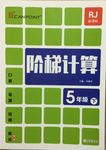题目内容
Our car________ and we had to push it off the road.
A. broke down B. broke up C. broke out D. broke away
A

练习册系列答案
 阶梯计算系列答案
阶梯计算系列答案
相关题目
题目内容
Our car________ and we had to push it off the road.
A. broke down B. broke up C. broke out D. broke away
A

 阶梯计算系列答案
阶梯计算系列答案